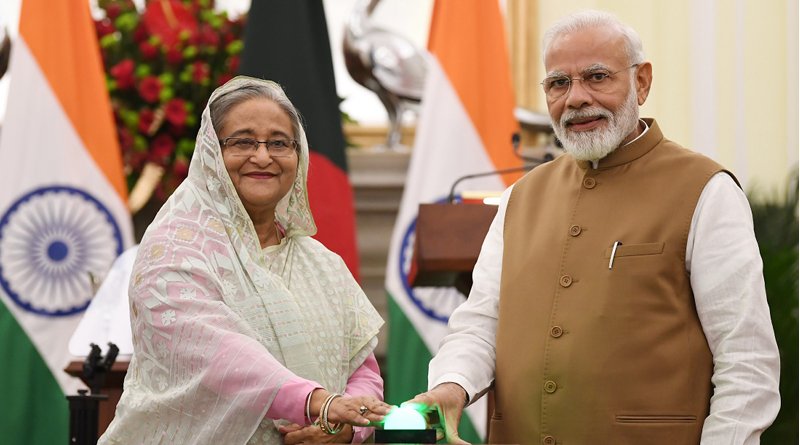India Struggling To Keep Its Financial Promises To South Asia – Analysys
By Kazi Mohammad Jamshed*
In 2010, India promised to finance US$7.36 billion in development projects in Bangladesh through lines of credit (LOC). So far, only 10.57 per cent of the total funds committed have been disbursed. Although the ‘Neighbourhood First’ policy and Indian Prime Minister Narendra Modi’s ‘Everyone Together, Everyone’s Development, Everyone’s Trust’ vision are integral components of its foreign policy, India is struggling to keep its promises. Will this over-promise but under-delivery of funds have an adverse impact on the relations between India and its LOC partners?
Bangladesh and India have warm bilateral relations, derived from their shared history. Although the states are in a region replete with resources, they have failed to transform those resources into shared and productive wealth. They have failed to ensure economic integration, even though their economies are largely complementary and would benefit from economic integration. Both countries are undertaking a myriad of initiatives to deepen their economic ties. One such initiative is India’s use of LOCs for financing development projects in Bangladesh.
The begging bowl, a historically predominant symbol of Indian diplomacy, has been replaced with LOCs to portray India as a donor state. LOCs have emerged as a key instrument of India’s economic diplomacy and have changed the country’s foreign policy template. LOCs are a financing mechanism through which the Exim Bank of India extends support for exporting projects, equipment, goods and services.
A surface-level view makes this initiative seem positive, but India sets the lending terms. These lending terms require critical analysis. For Bangladesh, the interest rate is 1 per cent and the penalty interest rate is set at 2 per cent. These loans have 20-year maturities with five-year grace periods and a 0.5 per cent commitment fee. The LOC indirectly ensures India is privileged in the transaction since it attaches a controversial string of conditions, including selecting Indian contractors for the proposed projects.
To enhance connectivity and accelerate overall development in Bangladesh, both countries have agreed to implement 46 projects under three LOC agreements — signed in 2010, 2016 and 2017 — at total amount of US$7.36 billion. As of April 2021, US$778.3 million has been disbursed, which is around 10.57 per cent of the total promised funds. Despite efforts to expedite the utilisation of the funds, technical hurdles and bureaucratic tangles from both sides are delaying their release.
Unlike the World Bank, the Asian Development Bank and other donor agencies which normally pay contractors through project director’s bank accounts, India’s LOC payments are made directly to contractors. Project directors in LOC funded projects change frequently, which has a debilitating effect on project implementation. Bangladesh should investigate why project directors change so frequently and address the issue promptly.
The project drafts require approval from the Indian High Commission before submission to the planning commission of Bangladesh. It takes almost a year to get the final approval because of the tardiness of both parties. Each step of the project requires approval from the Indian Exim Bank — another lengthy bureaucratic process intensifying the delay. Sometimes, the approval process is so long that the grace period expires before the successful implementation of the project. An ominous cherry on top is the ‘tied’ loan which requires that 75 per cent of the materials have to be procured from India, which is inefficient and expensive.
The situation is similar with LOCs agreed with other countries beyond Bangladesh. According to the Indian Ministry of External Affairs, more than 300 LOCs worth US$30.66 billion have been extended to 64 countries under the Indian Development and Economic Assistance Scheme. In Nepal, the Police Academy, expected to be complete 32 years ago, is still in limbo. Several other India-funded LOC projects in Nepal are also still awaiting completion, which has pushed Nepal to pivot towards China.
India’s neighbours complain about its ‘big-promises’ and ‘delivery-deficit’. This is creating a negative image that India is indifferent to its commitments and pushing South Asian countries toward China’s geostrategic orbit. India can only address its strategic concerns regarding China’s role in South Asia if it redesigns its economic diplomacy. Greater regional and economic integration is possible if India keeps in mind the expectations and concerns of its neighbours and follows through on its promises.
*About the author: Kazi Mohammad Jamshed is an Assistant Professor in the Department of International Business at the University of Dhaka.
Source: This article was published by East Asia Forum

